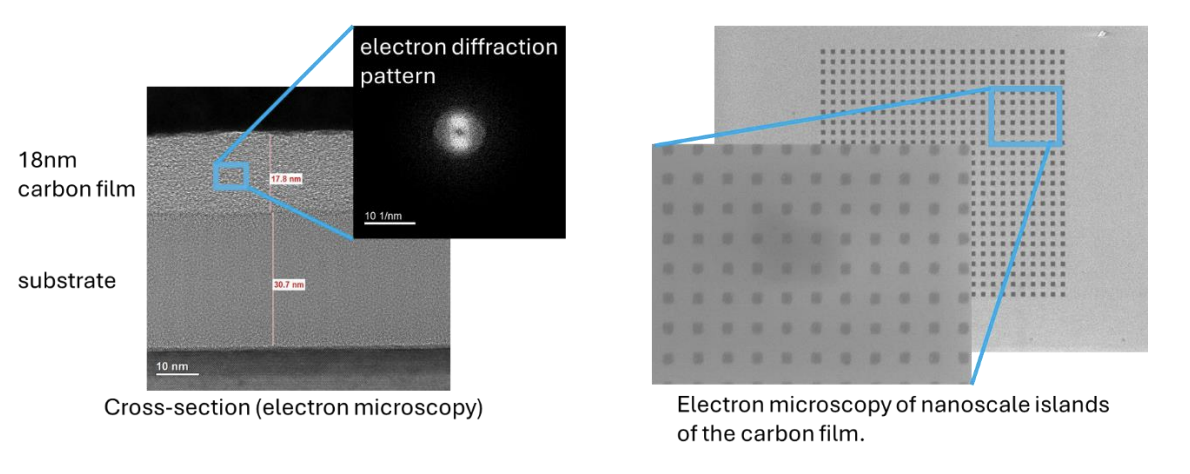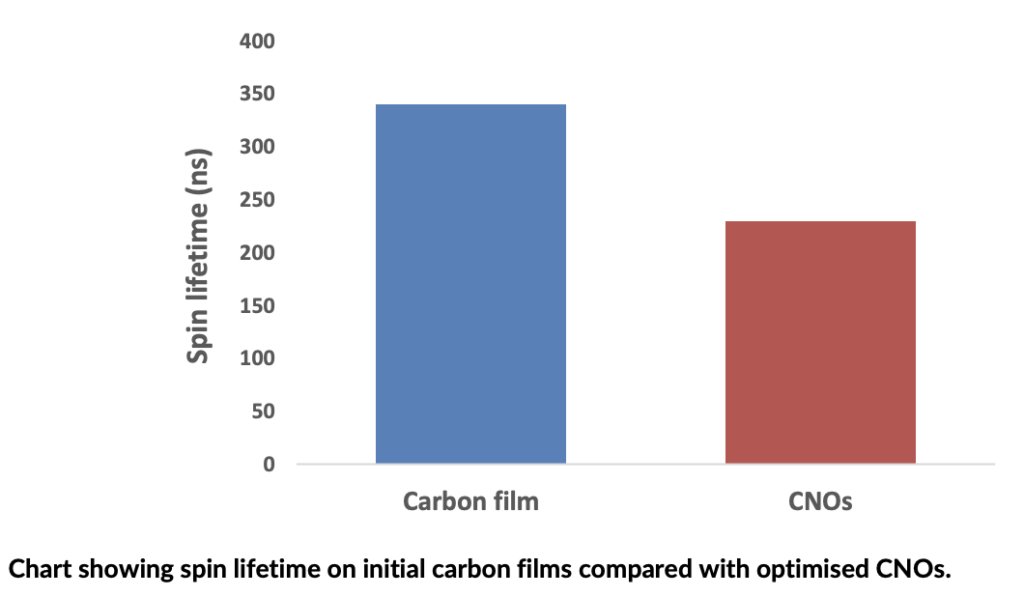Archer Develops New Carbon Material That Could Boost Quantum Devices

Insider Brief
- Archer developed new carbon films with electron spin lifetimes exceeding those previously measured on carbon nano-onions.
- The films are produced with a proprietary chemical vapour deposition process and should be scalable to full wafers.
- The films can be processed into quantum devices using standard semiconductor fabrication techniques, overcoming the manufacturing roadblock for carbon nano-onions.
Image: Left image shows a cross-section of a carbon film that has been grown on a silicon substrate. The right image shows a film that has been patterned into an ordered array of nanoscale islands.
Archer Materials Limited, a semiconductor company advancing the quantum technology and medical diagnostics industries, has developed a highly manufacturable carbon film with attractive quantum properties including long room-temperature electron spin lifetimes.
The development was made by the quantum team in its ongoing work on creating a scale-up path for carbon nano-onions (“CNOs”) and developing manufacturable methods for producing CNOs (ASX announcement 3 September 2024). Archer is expected to be able to observe key quantum phenomena on the films sooner than with CNOs and eventually develop quantum devices more rapidly.
The films are deposited on substrates using a proprietary chemical vapour deposition process, showing lifetimes approaching 400ns, and work continues to improve repeatability and uniformity across wafers. The process is extremely clean, ensuring films have extremely low or controlled levels of impurities and contaminants. This is important for creating long spin lifetimes.
Initial characterisation via electron microscopy shows some short-range order in the carbon films as opposed to atoms being randomly positioned. This has some similarities with the structure of the CNOs and may be part of the explanation for the films to exhibit longer electron spin lifetimes.
Work is in progress to understand the key parameters that impact spin lifetime so that the material can be further tuned for quantum performance.
The team has continued collaboration with École Polytechnique Fédérale de Lausanne (“EPFL”) to gain a fundamental understanding of spin lifetime control in our CNOs. This is a theory-led activity at EPFL with experimental work happening at Archer in Sydney. A scientific paper is in preparation and will be submitted for review and subsequent publishing soon. The work is being extended to the carbon films also.

The team can process the films using standard semiconducting processing in contrast with the previous methods required to build devices around CNOs. Characterisation and measurements on the quantum devices can be done faster than those on CNOs. This carbon will be tested alongside CNOs (with our superconducting resonator circuits).
Commenting on the carbon film development, Greg English, Executive Chair of Archer, said: “Manufacturability of many quantum materials is an ongoing challenge in the field, as this can also hinder research and development. This new carbon film helps accelerate the manufacturability of the qubit material.
“Working on this new film, alongside CNOs or even in place of CNOs, will accelerate the development of our quantum technology and provides a means of volume manufacturing of such devices. By observing quantum phenomena sooner, we can eventually develop quantum devices more rapidly.”
